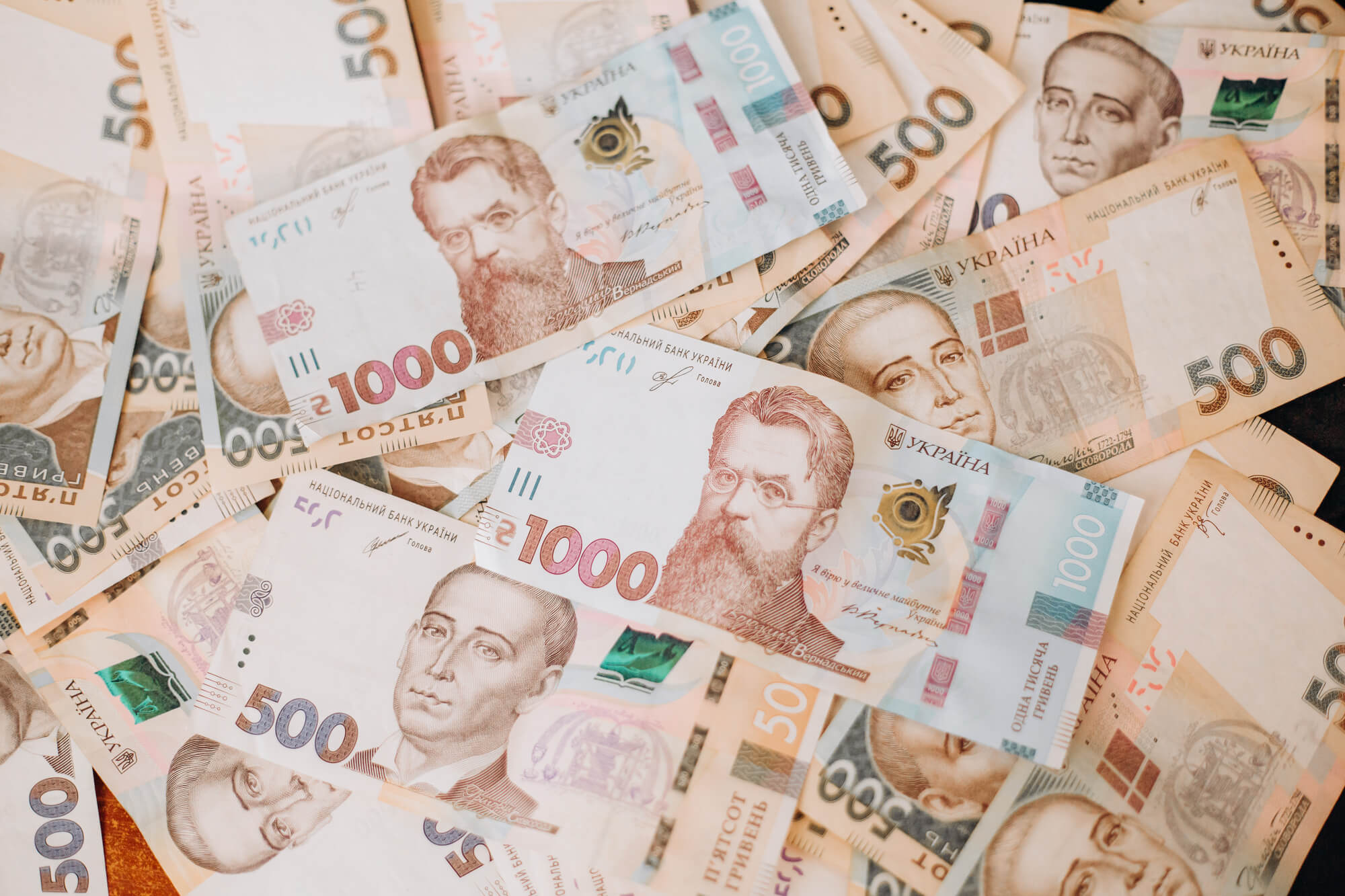All state support to agriculture could be structured in four big blocks: VAT exemption, direct subsidies, general services and fixed agricultural tax. The negative actions come through two ways: absence of VAT refunds and export quotas and duties. Of course, there are many small positives and negatives coming from the state policy but they are relatively immaterial.
There is a certain level of belief that Ukrainian agriculture is heavily depended on state’s support. A recent article on VoxUkraine by Oleg Nivievskyi (Institute for Economic Research and Policy Consulting) puts a USD 2.3-3.1 billion annual tag on agricultural sector support through subsidies and tax exemptions. The finance ministry estimated the value of tax exemptions available to the agriculture industry at USD 1.9 billion in 2013. As a result of the latter estimate, the cancellation of the most significant tax privilege to agriculture even appeared in the initial Memorandum of Economic and Financial Policies between the Ukrainian government and the IMF, the document which was behind the USD 17 billion stand-by agreement, signed last year. These calculations, however, often ignore the flip side of the coin: incremental taxation of agriculture exports and/or exports restrictions, which lower producer selling prices.
This article aims to fill the gap and estimate the negative impact of state policies on Ukrainian agriculture within last five years. As calculations below show, the negative effect of indirect export taxation was similar in amounts to the total value of state support to the sector in 2013 and 2014 and outweighed support in 2011 and 2012.
All state support to agriculture could be structured in four big blocks: VAT exemption, direct subsidies, general services and fixed agricultural tax. The negative actions come through two ways: absence of VAT refunds and export quotas and duties. Of course, there are many small positives and negatives coming from the state policy but they are relatively immaterial. Here is the details and estimate for each policy.
State support:
1.VAT exemption for farming industry. An agricultural producer is eligible to retain the difference between the VAT paid on inputs (i.e. fertilizer, fuel, plant protection, grain drying, etc.) and the VAT received when selling outputs (i.e. crops grown). With VAT rate at 20% in Ukraine, the amount of the subsidy for farming business could be estimated with a rule-of-the-thumb formula (Revenue – 60%* cost of sales)*20%, and its value varies with commodity prices and crop size (approximately 40% of costs, such as labor and land lease, are not subject to VAT). The finance ministry put USD 1.9 billion to value this subsidy in 2013 (including USD 1.5 billion related to crop production), assuming 100% collection[1].
2.Direct subsidies. These are cash disbursements from the state’s budget under various government support programs. Includes schemes widely adopted globally such as interest expense reimbursement, capex refunds for new animal farms, etc. While most of these programs are in place for years, the amounts available under these programs are budgeted each year and vary widely. Moreover, the distribution of these subsidies is believed to be corrupted. The below numbers show the dynamics of the budgeted amounts of the subsidies (while actual numbers are likely to be lower):
Direct state subsidies, USD mln
| 2010 | 2011 | 2012 | 2013 | 2014 | 2015 | |
| Livestock sector | 169 | 254 | 92 | 81 | 74 | 0 |
| Perennial crops | 60 | 70 | 135 | 13 | 8 | 0 |
| Other | 31 | 35 | 139 | 15 | 0 | 15 |
| Total | 259 | 359 | 365 | 109 | 83 | 15 |
Source: Ukrainian Agrarian Association
3.General services. Under OECD methodology, the government expenditures on bureaucracy, research, and regulatory agencies are considered to be a part of the state support. While business benefits from certain internationally required certification, a majority of this money is spent on soviet-style barely benefits from this so-called research, excessive and excessive certification and bureaucracy (finally most of the certification is soon to be gone), ). Approximately USD 700 million in the cost of general services is considered as “support” in this calculation, for the sake of consistency with OECD cross-country methodology.
4. Fixed Agriculture Tax. An agricultural producer is eligible to pay fixed agricultural tax (~USD 0.8/ha per year until 2015, ~USD 6/ha since 2015) instead of corporate income tax (now 18%). This was considered to be a material subsidy prior to 2015; levels established from 1 January 2015 are comparable to the ones which should have been paid under general corporate profit tax of 18%. Given the absence of reliable data on dynamics of farmers’ average profitability and high doubts of whether any of income tax would be collected under general regime, this subsidy is omitted from these calculations.[2]
Excessive taxation of agriculture exports:
1. Absence of VAT refunds on grain exports. To remind, value added tax is the one paid in the country of consumption. The tax is gradually collected along the value created, with each participant in the chain paying its share of the tax. To avoid double taxation and unintended non-taxation during international trade, the common approach used by all countries who adopted the VAT is that imported goods are subject to a VAT rate based on import price, while exported goods are eligible for refunds of VAT paid on inputs. To put things simple, if iron ore producer in Ukraine paid USD 10 per ton of VAT during the production process, the same amount would be refunded when this iron ore is exported. The importer in the country of consumption would pay the applicable VAT amount (based on tax rate in his country).
However, the Ukrainian government, faced with rising agricultural commodity prices in 2011, decided to abolish the refunds of VAT for grain export starting 1 July 2011 to 31 December 2013. Higher commodity prices implied that government had to refund more VAT for export while its VAT cash inflow was unchanged: farmers’ exemption on the payment of VAT on their value added left the state only with VAT collected on inputs used in production. The action was politically acceptable at that time, because it replaced grain export quotas (which reduce farmer selling prices by a larger extent), and 60-70% growth in global soft commodities prices more than compensated for approximately 20% price decrease caused by lack of VAT refunds. Furthermore, the action was heavily supported by international grain traders who quickly forgot the problems related to getting VAT refunds back, and were more than happy to pass-through the lack of VAT refunds onto farmers.
However, the government did not change this indirect taxation of export when agricultural commodity prices sharply decreased in 2013 and erased the profits of average farmer. The election of new government in spring 2014 did not change the situation, as the government faced a highly unbalanced budget.
How much farmers loose from the absence of VAT refunds on grain exports? The below calculations are based on grain production in Ukraine in 2011-14 and average export prices as reported by the State Statistics Service of Ukraine. It worth noting, that approximately half of the grain export produced in Ukraine is exported, thus farmer selling prices are determined by international prices – regardless whether the grain was effectively exported or sold domestically. So, the absence of VAT refunds reduced selling prices for all farmers, not only those who are selling their output for export.
Agriculture production not eligible for VAT refunds, million tons
| MY11/12 | MY12/13 | MY13/14 | MY14/15E | ||
| Wheat | mln t | 22.3 | 15.8 | 22.3 | 24.1 |
| Barley | mln t | 9.1 | 6.9 | 7.6 | 9.0 |
| Corn | mln t | 22.8 | 21.0 | 31.0 | 28.5 |
| Rapeseed | mln t | 1.4 | 1.2 | 2.3 | 2.2 |
Average export price
| MY11/12 | MY12/13 | MY13/14 | Jul-Nov 14 | ||
| Wheat | USD/ton | 245 | 286 | 240 | 206 |
| Barley | USD/ton | 249 | 282 | 235 | 200 |
| Corn | USD/ton | 244 | 270 | 197 | 174 |
| Rapeseed | USD/ton | 624 | 615 | 493 | 423 |
Agriculture sector loss due to VAT non-refund*
| MY11/12 | MY12/13 | MY13/14 | MY14/15E | ||
| Wheat | USD mln | 1,004 | 838 | 980 | 896 |
| Barley | USD mln | 416 | 363 | 326 | 326 |
| Corn | USD mln | 1,022 | 1,049 | 1,096 | 877 |
| Rapeseed | USD mln | 174 | 141 | 218 | 177 |
| Total | USD mln | 2,616 | 2,391 | 2,620 | 2,277 |
* Calculated as 20%*(Export price minus fobbing costs)*Production. Fobbing costs assumed at $20/t for all crops for simplicity.
Source: the State Statistics Service of Ukraine, except APK-Inform for export estimates in MY14/15.
So, the calculations show that Ukrainian agriculture lost USD 2.3-2.6 billion annually[3] only because of absence of VAT refunds on grain export, which exceeds the value of VAT exemptions granted.
An interesting point here is that this is not a zero-sum game with the state: the government saved approximately twice less, because it saved money only on the volumes which actually were exported, while agricultural producers lost revenues on the whole production.
Export, million tons
| MY11/12 | MY12/13 | MY13/14 | MY14/15E | ||
| Wheat | mln t | 5.3 | 6.9 | 9.4 | 10.8 |
| Barley | mln t | 2.5 | 2.1 | 2.5 | 3.7 |
| Corn | mln t | 13.7 | 13.6 | 20.1 | 18.0 |
| Rapeseed | mln t | 1.2 | 1.3 | 2.2 | 1.8 |
Government savings on VAT non-refund
| MY11/12 | MY12/13 | MY13/14 | MY14/15E | ||
| Wheat | USD mln | 236 | 366 | 414 | 402 |
| Barley | USD mln | 113 | 112 | 107 | 132 |
| Corn | USD mln | 613 | 680 | 713 | 555 |
| Rapeseed | USD mln | 146 | 151 | 212 | 145 |
| Total | USD mln | 1,107 | 1,309 | 1,446 | 1,233 |
Source: the State Statistics Service of Ukraine. Calculations are the same as above.
2. Export quotas and duties. In addition to cancelling the refunds of VAT, the government also introduced grain export duties in 2011/12. Though they lasted for several months only, they clearly negatively affected the agriculture industry earnings.
One year earlier, in 2010/11, Ukrainian government restricted grain exports through introduction of quotas on grain export. Because amounts stipulated in quotas were materially lower than available grain export surplus (production minus domestic consumption), the spread between domestic and international prices has increased sharply, and farmers earned less than they could under free trade.
OECD estimates that combination of export duties and quotas decreased agriculture industry’s revenues by USD 5 billion during 2011-2012.
Net effect of subsidies, tax exemptions, exports taxation and trade restrictions
Summing up the positives (largely based on OECD estimates) and negatives, results in more or less neutral fiscal effect on the agriculture industry in recent years and negative impact in 2011 and 2012.
Summary of positive and negative effects of state policies on Ukraine’s agriculture, USD mln
| 2010 | 2011 | 2012 | 2013 | 2014 | |
| VAT exemption for farming industry* | 1,540 | 1,334 | 1,709 | 1,900 | n/a** |
| Direct subsidies | 259 | 359 | 365 | 109 | 83 |
| General services | 608 | 673 | 774 | n/a | n/a |
| Total positives | 2,408 | 2,366 | 2,848 | ~2,900 | < 2,500* * |
| Absence of VAT refunds on grain exports | – | (2,616) | (2,391) | (2,620) | (2,277) |
| Market price support*** | 276 | (3,422) | (1,589) | n/a | n/a |
| Total negatives | 276 | (6,038) | (3,981) | (2,620) | (2,277) |
* Calculated as Producer Support Estimate (from OECD) minus Direct subsidies.
** VAT exemption value is lower in 2014 due to significant drop in agriculture commodity prices.
*** Includes positive effects of certain policies like minimum milk price, and negative effect from export quotas and duties. Immaterial amounts in 2013 and 2014.
Source: OECD, Ukrainian Agrarian Association, own calculations.
Notes
[1] In practice, the government understands that VAT collection from crop growers would be very low due to two reasons:
1) practical impossibility to check real levels of output: two neighboring fields could easily have substantial variation in crop yields. This would allow farmers to sell up to half of their output for cash, omitting VAT obligation.
2) 90% farmers are small, which could make the cost of control higher than potential revenues.
[2] As with VAT, one could argue whether 90% farmers (who are small producers) would be paying any profit tax at standard corporate rate, given they could easily avoid doing so.
[3] One could argue that lower grain prices benefit meat producers through lower feedstock cost, and thus profits unearned by crop producers are booked by meat producers. While this could be partially true, the analysis of the MHP financials shows that their poultry segment’s EBITDA was in range of USD 0.7-1.0 per kg within last five years while crop prices varied by three times within the same period.
Attention
The author doesn`t work for, consult to, own shares in or receive funding from any company or organization that would benefit from this article, and have no relevant affiliations



